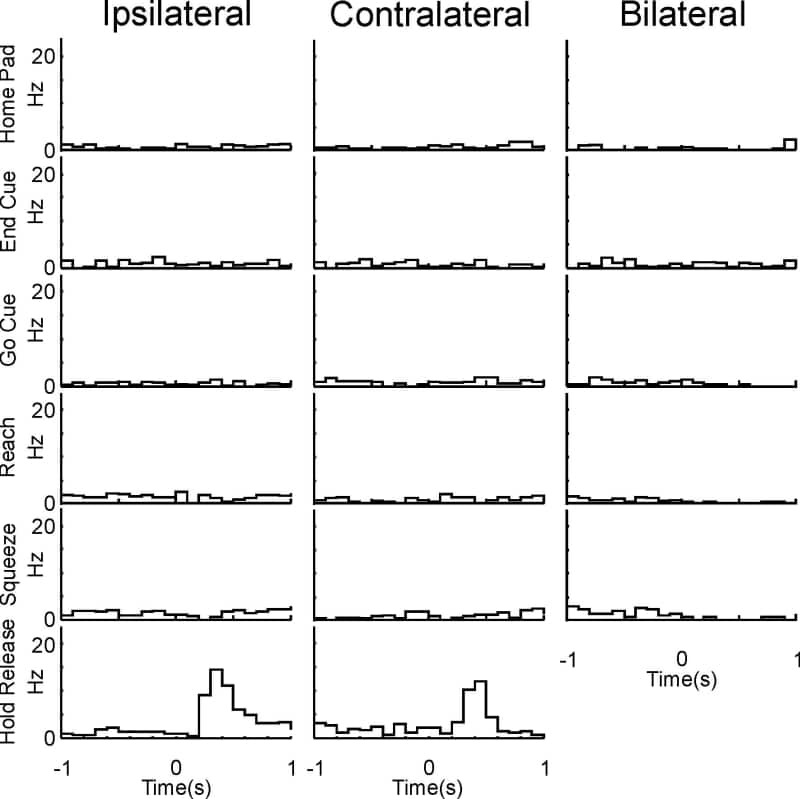The supplementary motor area (SMA) is important in bimanual motor control; although dense callosal connections serve to link SMA in each hemisphere, little is known about the firing patterns of these cells. We here report recordings from antidromically identified corpus callosum (CC) neurons in the hand representation of SMA, in two m. mulatta monkeys trained to perform a bimanual precision grip task for food reward. The monkeys initiated the task by placing both hands on home pads. Audiovisual cues indicated whether right hand, left hand or both were to be used, and following an instructed delay, the monkeys reached out and performed a precision grip (1s hold period). After training was complete, the monkeys were implanted (under full general anaesthesia: 1.52.5% isoflurane inhalation in 50:50 N2O:O2 and aseptic conditions) with a stainless steel headpiece to allow atraumatic head fixation and a recording chamber sited above a craniotomy exposing SMA. Single units were recorded in daily microelectrode penetrations whilst the animals performed the trained task. CC neurons were identified antidromically by stimulation through chronically implanted electrodes in the corpus callosum close to the midline. Thirty-five CC units were encountered, and 13 units were recorded long enough to permit firing rate analysis (e10 trials per task type). The mean antidromic latency was 1.8ms (22/35 had latencies 3ms). CC neurons had low mean firing rates during the trial for all three movement types, at 3.7±5.2Hz, 3.1±3.6Hz and 3.5±4.6Hz for ipsilateral, contralateral and bilateral trials, respectively (mean±SD). The corresponding mean peak modulations (difference between minimum and maximum rate) from trial start to the end of the hold period were 12.9±14.8Hz, 15.1±21Hz and 17.7±23.9Hz. However, some cells showed a much higher rate just after the hold phase, when the monkey reached out for its reward. Aligning analysis to the peak lever release velocity often revealed a substantial modulation, in units that otherwise showed little task-related activity (see Fig. 1). Across all 13 units, the mean firing rates for the 2s period centred on the peak lever velocity were 13±9.5Hz and 18.3±18.2Hz for reaches with the ipsilateral and contralateral hand; corresponding mean peak modulations were 12.3±8.9Hz and 17.5±17.9Hz. The overall low mean and peak firing rates of most CC neurons suggest against a role for interhemispheric communication of detailed movement parameters, such as force or velocity. Alternatively, CC neurons may be signalling the timing of behavioural events, and a low baseline firing rate would provide a better signal-to-noise ratio.
University College London December 2005 (2006) Proc Physiol Soc 1, C11
Oral Communications: Activity of callosal neurons in primate SMA during a bimanual precision grip task
Soteropoulos, Demetris; Baker, Stuart N;
1. University of Newcastle, Newcastle Upon Tyne, United Kingdom.
View other abstracts by:
Figure 1. Task-related modulation in firing rate.
Where applicable, experiments conform with Society ethical requirements.

